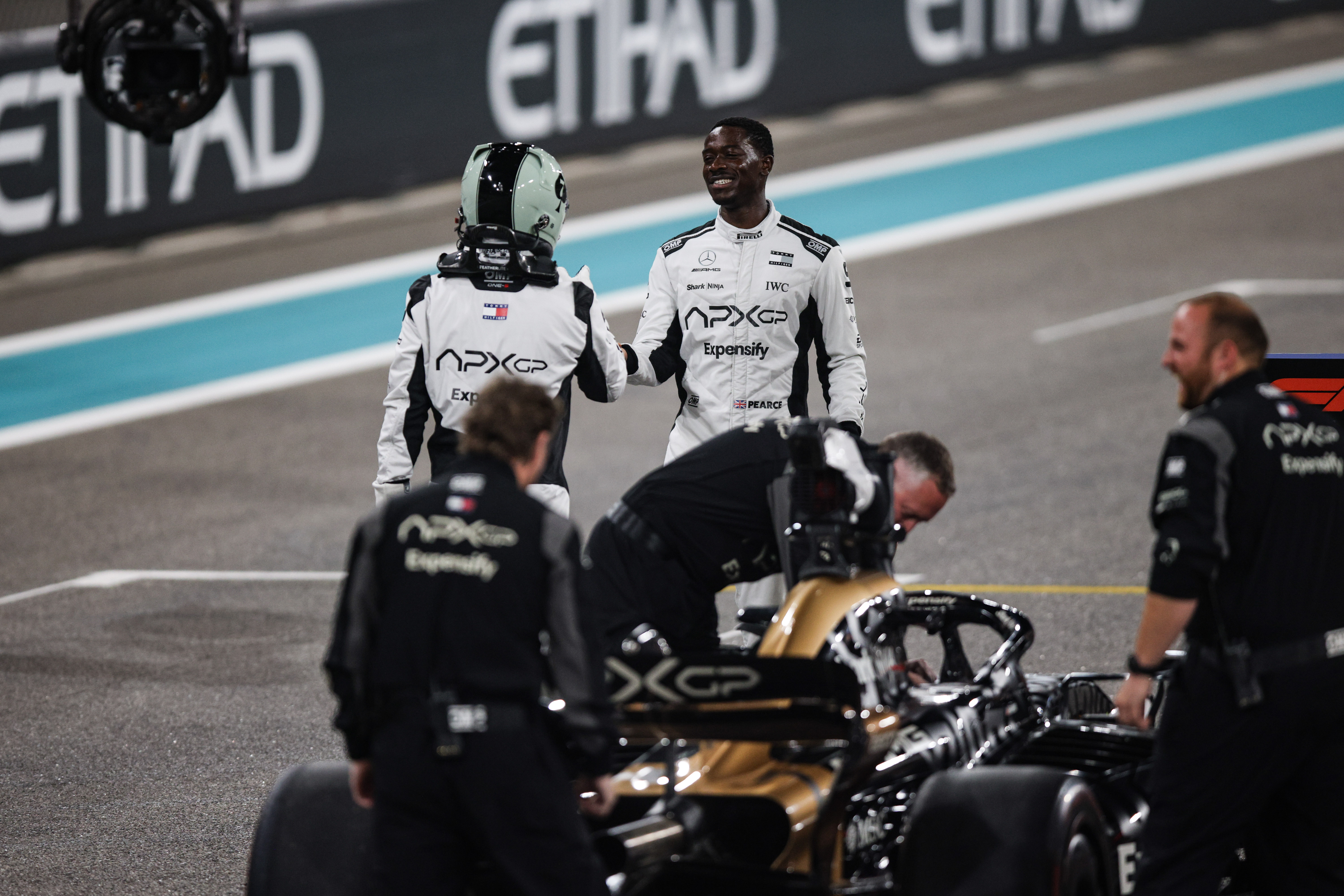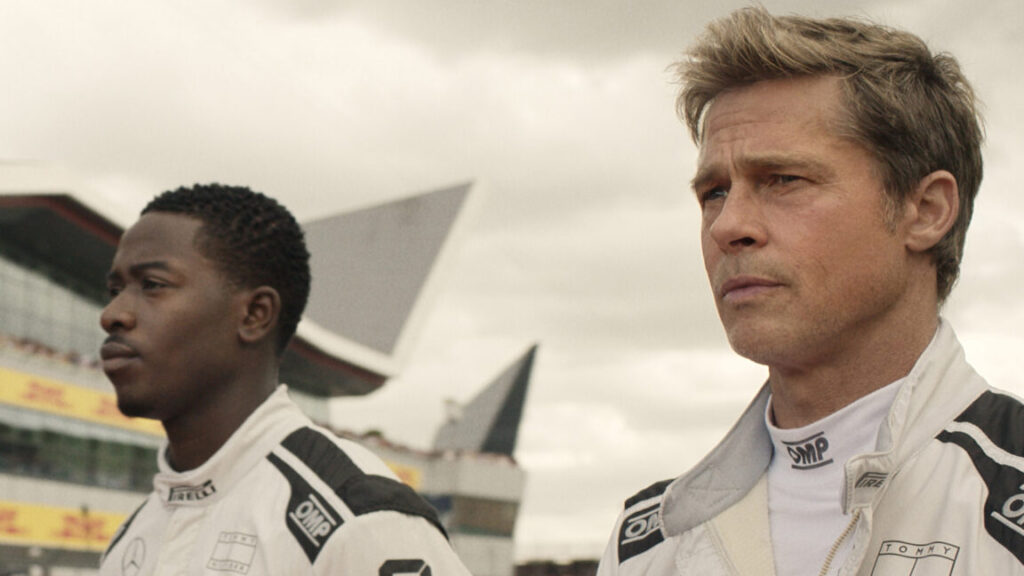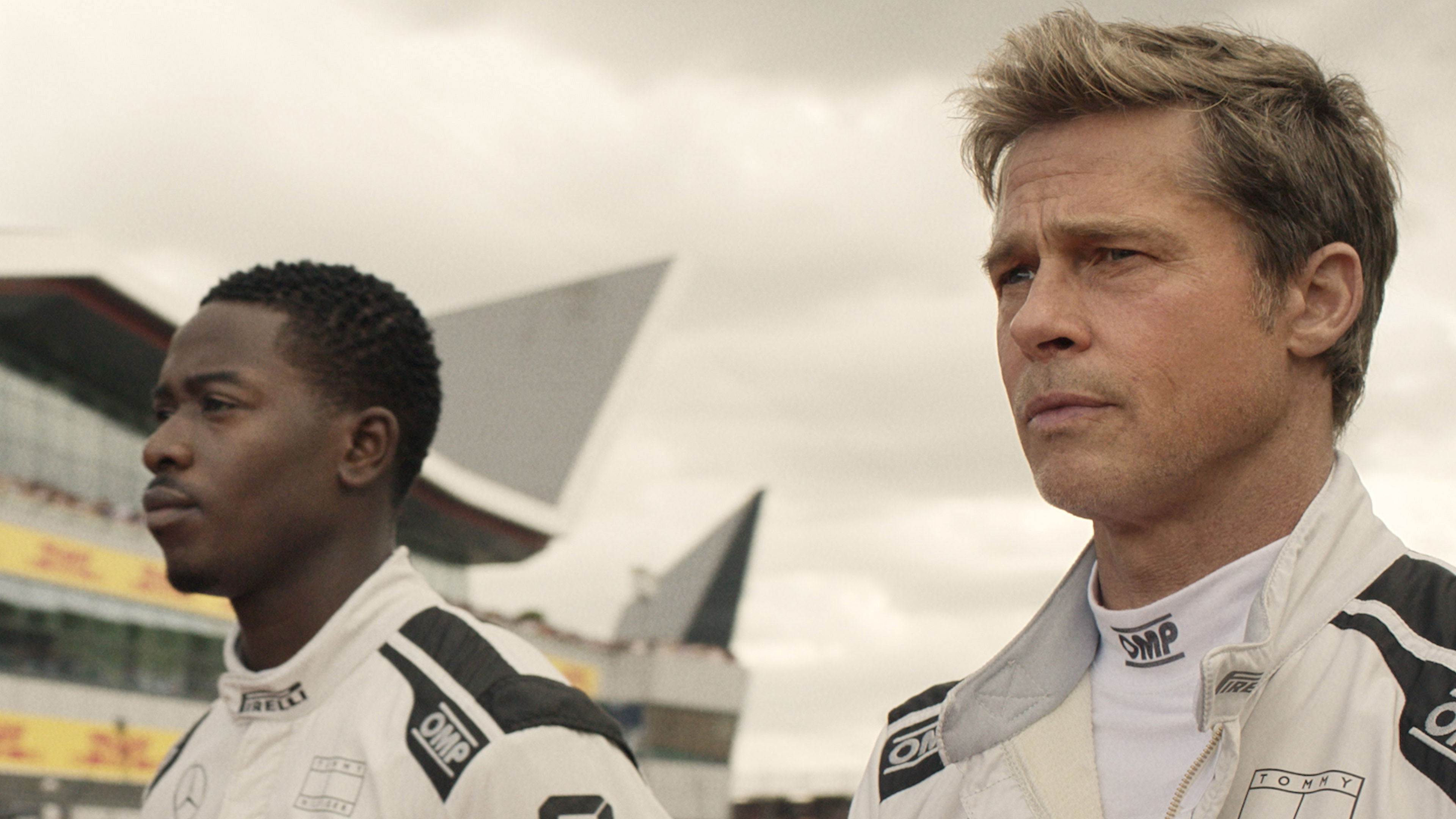From Le Mans to Driven—where does F1: The Movie rank?
It may not have escaped your attention that there’s a new film about motorsport called F1: The Movie. It’s a return-to-racing story with elements you’ll have seen before, just maybe with other sports. A driver has been looking to slay his personal demons. There’s a wise veteran, an impatient rookie, and an underdog team with its back to the wall. Except this time, the backdrop is the multicolored circus of Formula 1, seen close up at 200 mph.
Backed by Apple and made by people responsible for high-energy productions like the recent Top Gun: Maverick, the film takes advantage of some of those same ingredients. For one, the filmmakers got an all-access pass from the powers that be, filming on the actual Formula 1 grid during 2023 and some of 2024. Having seven-time champion Lewis Hamilton as a producer helped with that. And the filmmakers were able to capture remarkable footage in the process thanks to powerful cameras that are now much smaller than the versions they strapped to some US Navy fighter jets.
The movie comes with a prebuilt audience, one that’s grown enormously in recent years. The Drive to Survive effect is real: Motorsport, particularly F1, hasn’t been this popular in decades. More and more young people follow the sport, and it’s not just among the guys, either.

Spot the camera car. Credit: Joe Portlock – Formula 1/Formula 1 via Getty Images
I’m not a new fan, but I only started really paying attention to the series at the end of 1993. I’d have reviewed the film sooner, but the screenings occurred while I was on vacation, and the 24-hour races on consecutive weekends at the Nurburgring in Germany and Spa-Francorchamps in Belgium were not to be missed.
The setup of F1 sees Sonny Hayes (played by Brad Pitt) brought back to the world of F1 30 years after a crash ended his rookie season. We find Hayes racing in the Rolex 24 at Daytona, filmed at the actual race last year. He’s lured back to F1 by his old friend, who now owns APXGP, in a Hail Mary attempt to score some points before the end of the half-completed season, thus saving the team.
An F1 driver’s most immediate rival is always their teammate—they both have to drive the same car, after all, so comparisons are immediate. (Pedants: please no long arguments about different setups or upgrades—you know what I mean.) And thus Hayes’ rival is Joshua Pearce (played by Damson Idris), a young driver in his first season who sees no reason to trust a driver whose arrival in his team mid-season seems more like a practical joke. That’s as much of the plot as I’ll reveal, but the writing is so formulaic that you can probably construct the rest for yourself quite easily.
What works, what doesn’t?
That’s not to say it’s a bad film. Yes, it requires some suspension of disbelief if you know enough about racing, but the issues are pretty small. The racing scenarios seem outlandish, but all of them have happened at one time or another—just perhaps not all to one team in nine races. Mostly, it’s a very close look at some parts of the sport most of us would never see—an actual F1 wind tunnel test filmed at Williams’ facility, which required assurances to the sport that this wasn’t just a way for that team to gain some more wind tunnel hours. McLaren’s impressive MTC shows up, too, though I’m quite sure you can’t park either a car or a bike by that particular door and expect to find either there when you return.

Pitt and Idris filming on-track at the Yas Marina circuit during the 2024 Abu Dhabi Grand Prix. Credit: Gongora/NurPhoto via Getty Images
That’s the level of detail you can expect to trip you up. You may notice that a sequence that’s supposed to be in Spain or Belgium looks a little too much like Brands Hatch, an hour outside of London. Or that a seat fitting should take at least some amount of time.
Among the film’s biggest successes is what we don’t see. The cars don’t have an endless sequence of gears for the driver to punch their way through. No one suddenly remembers to accelerate all the way halfway down the straight rather than out of the apex like in real life. No race cars are driven out of tracks into high-speed pursuits, and no drivers have conversations with their rivals mid-race at 8,000 rpm.
All of that qualifies F1 for a podium position among racing movies. Neither the recent Rush nor Ford v Ferrari could resist some of those dumber tropes, and even the most desperate racing junkie will admit that neither Driven nor Michel Vaillant are really worth the time it takes to watch them unless the intention is to Statler-and-Waldorf your way through it with a friend.
And of course, there’s Days of Thunder, which was produced by Jerry Bruckheimer, who also produced F1. The NASCAR movie loses what was third place in my personal pantheon of racing movies to the carbon-fiber newcomer. There’s little distance between them; I’m just much more interested in F1 than stock cars.
Only 3rd place?
The only problem is that all this has been done before. The last time F1 was this big, the same combination of fast cars and good-looking drivers captured Hollywood’s attention just the same. John Frankenheimer was the man who got to make the movie, and 1966’s Grand Prix broke new ground at the time, starring James Garner, who I’m told turned out to be rather fast behind the wheel in filming. Its story is sentimental, and some of the acting is a little wooden, but it’s visually exciting and features spectacular footage of the 1966 F1 season.
James Garner and Toshiro Mifune starred in Grand Prix. FilmPublicityArchive/United Archives via Getty Images
The fact that Grand Prix broke so much more new ground than F1 means that Frankenheimer’s film finishes just ahead for me. But neither can quite supplant the magic of Le Mans, the 1971 film starring Steve McQueen, which was recently remastered on Blu-ray.
McQueen might have been one of the world’s biggest movie stars at the time, but he mostly wanted to be a racing driver. He wasn’t bad at it, either—in 1970, he almost won the 12 hours of Sebring in a Porsche 908 despite having broken his foot in six places a couple of weeks earlier. The actor was originally up for Garner’s role in Grand Prix and never gave up on a motorsports movie, capitalizing on his success in the late 1960s to get his own project underway.
Objectively, as a movie, Le Mans can be considered a failure. There is no dialogue for the first half-hour, just the occasional narration from a trackside announcer that contextualizes the scale of the annual 24-hour race. There was no script for months during filming, and the film went through directors John Sturges and Alan Trustman before Lee H. Katzin finished the job.
Even so, there was an assortment of many of the actual race cars that competed in the 1970 race at Le Mans. And the town had graciously allowed McQueen’s production company to close some of the roads used by the track for more filming. The cars were mostly piloted by the elite racing drivers of the time, but McQueen drove his own character’s Porsche 917K—at racing speeds but with heavy film cameras rigged onto it—as did Siegfried Rauch in the Ferrari 512.
This is what happens when you let a frustrated racing driver make a movie. CBS via Getty Images
Other footage had been shot in the actual 1970 race, both trackside and onboard, thanks to the same Porsche 908 that McQueen drove earlier that year in Florida, which was used as a camera car. At times, it’s more like a documentary. But only at times. With Le Mans, there was no CGI, and no other tracks were standing in for filming.
F1 can’t quite make that claim. At times, the cars seemed to be at slightly different scales on track—a product of Pitt and Idris being filmed driving slightly smaller, slightly slower F2 cars. Perhaps my biggest issue was with some of the unsporting behavior you see on screen. Those antics work better in a comedy like Major League; in a serious drama, it feels a little like disrepute.
None of that will stop me watching F1 again, however.
From Le Mans to Driven—where does F1: The Movie rank? Read More »


